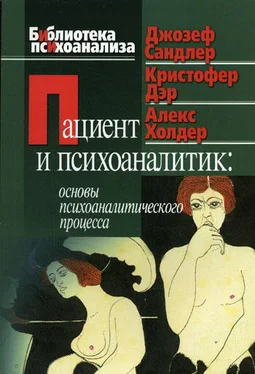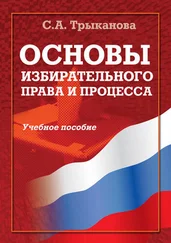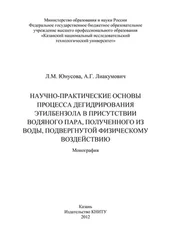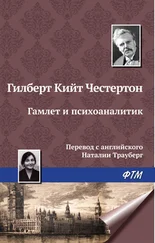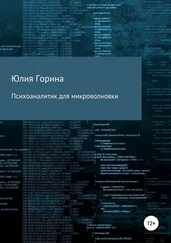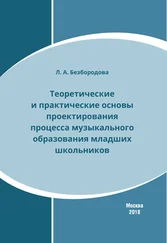McLAUGHLIN, J.T. (1983). Some observations on the application of frame theory to the psychoanalytic situation and process // Psychoanalytic Quarterly, 52, 167–179.
MEISSNER, W.W. (1978). Theoretical assumptions of concepts of the borderline personality // Journal of the American Psychoanalytic Association, 26, 559–598.
MELTZER, D. (1967). The Psychoanalytical Process. – Lndn: Heinemann.
MENNINGER, R. (1958). Theory of Psychoanalytic Technique. – N.Y.: Basic Books.
MICHELS, R. (1986). Oedipus and insight // Psychoanalytic Quarterly, 55, 599–617.
MISHLER, E.G., WAXLER, N.E. (1966). Family interaction patterns and schizophrenia: a review of current theories // International Journal of Psychiatry, 2: 375–413.
MITSCHERLICH-NIELSEN, M. (1968). Contribution to symposium on acting out // International Journal of Psycho-Analysis, 49: 188–192.
MODELL, A.H. (1984). Psychoanalysis in a New Context. – N.Y.: International Universities Press.
MODELL, A.H. (1988). The centrality of the psychoanalytic setting and the changing aims of treatment // Psychoanalytic Quarterly, 57, 577–596.
MODELL, A.H. (1989). The psychoanalytic setting as a container of multiple levels of reality: a perspective of the theory of psychoanalytic treatment // Psychoanalytic Inquiry, 9, 67–87.
MOELLER, M.L. (1977a). Zur Theorie der Gegenuebertragung // Psyche, 31: 142–166.
MOELLER, M.L. (1977b). Self and object in countertransference // International Journal of Psycho-Analysis, 58: 365–374.
MONEY-KYRLE, RE. (1956). Normal counter-transference and some of its deviations // International Journal of Psycho-Analysis, 37: 360–366.
MOORE, B.E., FINE, B.D. (1967). A Glossary of Psychoanalytic Terms and Concepts. – N.Y.: American Psychoanalytic Association.
MOORE, B.E., FINE, B.D. (1990). Psychoanalytic Terms and Concepts. – New Haven, CT: The American Psychoanalytic Association and Yale University Press.
MORGENTHALER, F. (1978). Technik. Zur Dialektik der psychoanalytischer Praxis. – Frankfurt: Syndicat.
MUSLIN, H. (1986). On working through in self psychology // A. Goldberg (Ed.), Progress in Self Psychology, Vol.2. – N.Y.: International Universities Press.
MYERSON, P.A. (1960). Awareness and stress: post-psychoanalytic utilization of insight // International Journal of Psycho-Analysis, 41: 147–156.
MYERSON, P.A. (1963). Assimilation of unconscious material // International Journal of Psycho-Analysis, 44: 317–327.
MYERSON, P.A. (1965). Modes of insight // Journal of the American Psychoanalytic Association, 13, 771–792.
NAIMAN, J. (reporter) (1976). Panel: The fundamental of psychic changes in clinical practice // International Journal of Psycho-Analysis, 57: 411–418.
NEUBAUER, P.B. (1979). The role of insight in psychoanalysis // Journal of the American Psychoanalytic Association, 27 (supplement), 29–40.
NOVEY, S. (1962). The principle of «working through» in psychoanalysis // Journal of the American Psychoanalytic Association, 10, 658–676.
NOVEY, S. (1968). The Second Look. Baltimore, MD: Johns Hopkins Press.
NOVICK, J. (1970). The vicissitudes of the «working alliance» in the analysis of a latency girl // The Psychoanalytic Study of the Child, 25: 231–256.
NOVICK, J. (1980). Negative therapeutic motivation and negative therapeutic alliance // The Psychoanalytic Study of the Child, 35: 299–320.
NUNBERG, H. (1920). The course of the libidinal conflict in a case of schizophrenia // Practice and Theory of Psycho-Analysis. – N.Y.: International Universities Press.
NUNBERG, H. (1951). Transference and reality // International Journal of Psycho-Analysis, 32: 1–9.
OFFENKRANTZ, W., TOBIN, A. (1978). Problems of the therapeutic alliance: analysis with simultaneous therapeutic and research goals // International Review of Psycho-Analysis, 5: 217–230.
OGDEN, Т.Н. (1983). The concept of internal object relations // International Journal of Psycho-Analysis, 64: 227–241.
OLINICK, S.L. (1954). Some considerations of the use of questioning as a psychoanalytic techniqie // Journal of the American Psychoanalytic Association, 2, 57–66.
OLINICK, S.L. (1964). The negative therapeutic reaction // International Journal of Psycho-Analysis, 45: 540–548.
OLINICK, S.L. (reporter) (1970). Panel: Negative therapeutic reaction // Journal of the American Psychoanalytic Association, 18, 665–672.
OLINICK, S.L. (1978). The negative therapeutic reaction: a retrospective fifteen years later // Journal of the Philadelphia Association for Psychoanalysis, 5: 165–176.
OLINICK, S.L., POLAND, W.S., GRIGG, K.A., GRANATIR, W.L. (1973). The psychoanalytic work ego: process and interpretation // International Journal of Psycho-Analysis, 54: 143–151.
ORNSTEIN, P., ORNSTEIN, A. (1980). Formulating interpretations in clinical psychoanalysis // International Journal of Psycho-Analysis, 61: 203–211.
ORR, D.W. (1954). Transference and countertransference: a historical survey // Journal of the American Psychoanalytic Association, 2, 621–670.
O’SHAUGHNESSY, E. (1983). Words and working through // International Journal of Psycho-Analysis, 64: 281–289.
PARKIN, A. (1981). Repetition, mourning and working through // International Journal of Psycho-Analysis, 62: 271–281.
PERSON, E. (1983). Women in therapy: therapist gender as a variable // International Review of Psychoanalysis, 10: 193–204.
PERSON, E. (1985). The erotic transference in women and men: differences and consequences // Journal of the American Academy of Psychoanalysis, 13, 159–166.
PICK, I.B. (1985). Working through in the countertransference // International Journal of Psycho-Analysis, 66: 157–166.
POLAND, W.S. (1988). Insight and the analytic dyad // Psychoanalytic Quarterly, 57, 341–369.
PRESSMAN, M. (1969a). The cognitive function of the ego in psychoanalysis: I. The search for insight // International Journal of Psycho-Analysis, 50: 187–196.
PRESSMAN, M. (1969b) The cognitive function of the ego in psychoanalysis: II. Repression, incognizance and insight formation // International Journal of Psycho-Analysis, 50: 583–588.
RACKER, H. (1953). A contribution to the problem of countertransference // International Journal of Psycho-Analysis, 34: 313–324.
RACKER, H. (1957). The meanings and uses of countertransference // Psychoanalytic Quarterly, 26, 303–357.
RACKER, H. (1968). Transference and Countertransference. – N.Y.: International Universities Press. [Reprinted Lndn: Karnac Books, 1986.]
RANGELL, L. (1955). On the psychoanalytic theory of anxiety // Journal of the American Psychoanalytic Association, 3, 389–414.
RANGELL, L. (1968). A point of view on acting out // International Journal of Psycho-Analysis, 49: 195–201.
RANGELL, L. (1981). From insight to change // Journal of the American Psychoanalytic Association, 29, 119–141.
RANGELL, L. (1985). Defense and resistance in psychoanalysis and life // H.P. Blum (Ed.), Defense and Resistance. – N.Y.: International Universities Press.
RAPAPORT, D. (1959). A historical survey of ego psychology // E. Erikson, Identity and the Life Cycle – N.Y.: International Universities Press.
RAPAPORT, E.A. (1956). The management of an erotized transference // Psychoanalytic Quarterly, 25, 515–529.
REED, G.S. (1987). Scientific and polemical aspects of the term «transference neurosis» in psychoanalysis // Psychoanalytic Inquiry, 7, 465–483.
REED, G.S. (1990). A reconsideration of the concept of transference neurosis // International Journal of Psycho-Analysis, 71: 205–217.
REICH, A. (1951). On countertransference // International Journal of Psycho-Analysis, 32: 25–31.
REICH, A. (1960). Further remarks on countertransference // International Journal of Psycho-Analysis, 41: 389–395.
Читать дальше
Конец ознакомительного отрывка
Купить книгу
